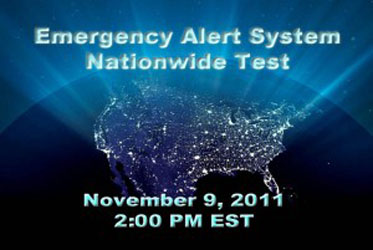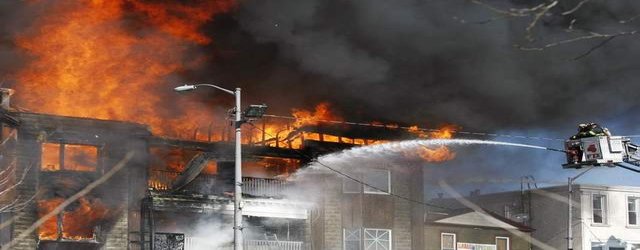
Nationwide Emergency Alert System Test Video
“This is a test of the Emergency Alert System.”
We’ve all heard it. It happens every once in a while; whether it’s on our radio, or on a local television channel we had been watching. Most of the time it is just an annoyance, a break in what we were watching or listening too. And most of the time, those 30 seconds that message plays, feel like the longest 30 seconds in television history, until finally, the regular programming comes back on and we can pretend like it never happened.
But on Wednesday, Nov. 9, at 2 p.m. Eastern Standard Time, the entire nation heard that message simultaneously, for the first time in history.
There are plenty of conspiracy theories swirling around the real reason why the EAS decided to make a national announcement. Chuck Mikowski, the Director of Technology at WZZM 13, a television news station in West Michigan, had his own opinion of the EAS test on November 9. “Conspiracy theorists think that something is going to happen nationally that the President would need to address to the nation. I think it’s more of a reality check from 9/11, the recent terrorist attacks and all the threats- the FEMA just wants to be prepared for a national emergency if it ever happens.”
To combat those who do believe the conspiracy theories, the FEMA’s press release about the Emergency Alert System test stated, “the various disasters our country has faced this year underscore the need for effective and well-tested emergency alert and warning systems that could be used in a time of real emergency, at a moment’s notice.”
The EAS or Emergency Alert System is a “media communications-based alerting system,” as the FCC’s website states. It started out as the CONELRAD, or Control of Electromagnetic Radiation, a military alert system created in the early 1950’s. It was expanded to include state and local governmental use after the Cuban Missile Crisis in 1963. It wasn’t until the 1990’s that it changed its name to the Emergency Alert System, but has always kept the same emergency test.
According to Federal officials, Nov. 9’s test was done to allow FEMA, or Federal Emergency Management Agency, and the FCC “to assess how well the EAS would perform its primary function: alerting the public about a national emergency.” And with both the natural and unnatural disasters that have occurred over the past few years, there is no time like the present to get the EAS up to its full potential.
FEMA sees the EAS as a helpful last resort for the president of the United States to address the nation in an emergency. And because the Emergency Alert System uses a “daisy chain” approach, where a few-dozen television stations convey their signals to secondary stations that do the same, during an actual emergency, it does not run the risk of clogging up the airwaves, like phone towers do.
With 14,000 plus television and radio stations and 10,000 plus cable television systems in the EAS, it would not take long for a real emergency to become known. In a press release issued by FEMA, they stated, “the EAS test plays a key role in ensuring the nation is prepared for any type of hazard, and that the U.S. public can receive critical and vital information should it ever be needed.”
Unfortunately for FEMA, the EAS and the country, the test did not go as well as some would have hoped. But in 45 days from Nov. 9, FEMA will receive the actual results of the EAS test. Across the U.S., viewers described cutouts, skipping, strange noises and even a Lady Gaga song playing instead of the usual recording. For those who did experience any of these, FEMA asked them to tell them all about it on Twitter @CraigAtFEMA or email them at ipaws@dhs.gov.
So now we wait.




